Drowning is still the top cause of accidental injury death for kids ages 1–4 in the U.S., yet many parents overestimate how quickly children learn water skills. The reality: kids don’t absorb safety rules just because adults explain them — they need repeated, game-based exposure that builds automatic responses.
Water safety games take essential survival behaviors—breath control, boundary awareness, safe entries, and emergency reactions—and turn them into fast, memorable challenges kids actually engage with. Behavioral research is clear: structured play is one of the most reliable ways to hard-wire skills that must be executed under stress.
Before integrating any water safety games, homeowners must anchor play in the following foundational principles. These recur throughout the guide because safety habits only “stick” through repetition.
Children must learn to:
Use simple, gamified reminders like “point to the deep end” before every swim session.
Evidence from aquatic safety organizations shows that controlled water entry dramatically reduces injuries. Children should consistently practice:
Homeowners are not lifeguards, but families should understand:
Games can reinforce these principles without creating fear.
Every family should have:
This creates a layered defense—games teach skills, barriers prevent tragedy.
This section introduces safety-focused concepts that align with real skill development and can be adapted into dozens of specific games.
These games help kids get comfortable with water movement, temperature shifts, and basic buoyancy without triggering fear responses. The goal is to make shallow-water exposure predictable and playful so children stop bracing up and start moving naturally. Typical variations include step-in/step-out circuits, walking through gentle currents, and controlled splash challenges.
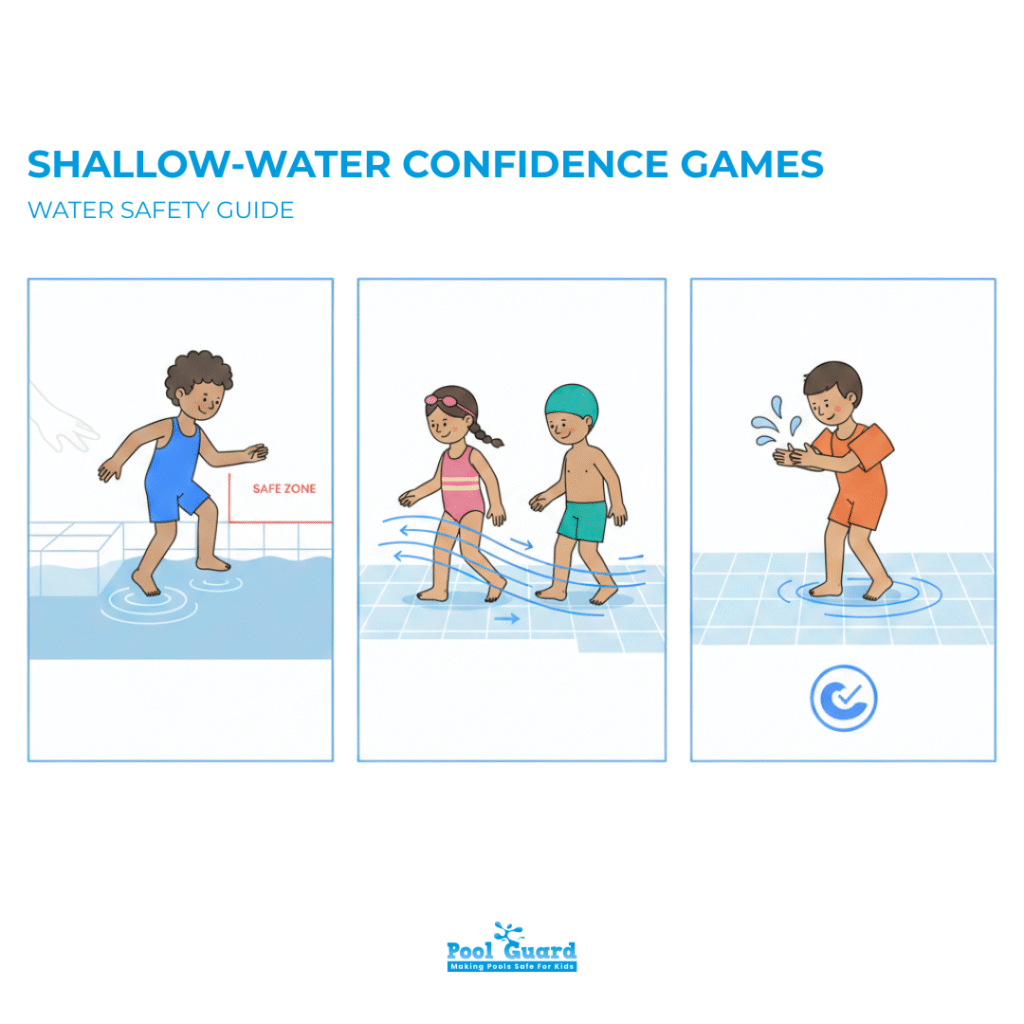
These games force kids to actually feel how their body shifts, lifts, and rotates in water—something they can’t learn from verbal cues. The aim is to make balance and floating automatic, because survival floating depends on instinct, not theory. Common formats include floating races, kickboard balance tests, and log-roll practice.
These games push kids to stay calm underwater and manage breath control without panic, which is the real barrier most parents underestimate. The focus is on short, repeatable dives that normalize pressure, visibility changes, and the instinct to rush back up. Typical versions include object retrieval, underwater ring passes, and controlled pop-up drills.
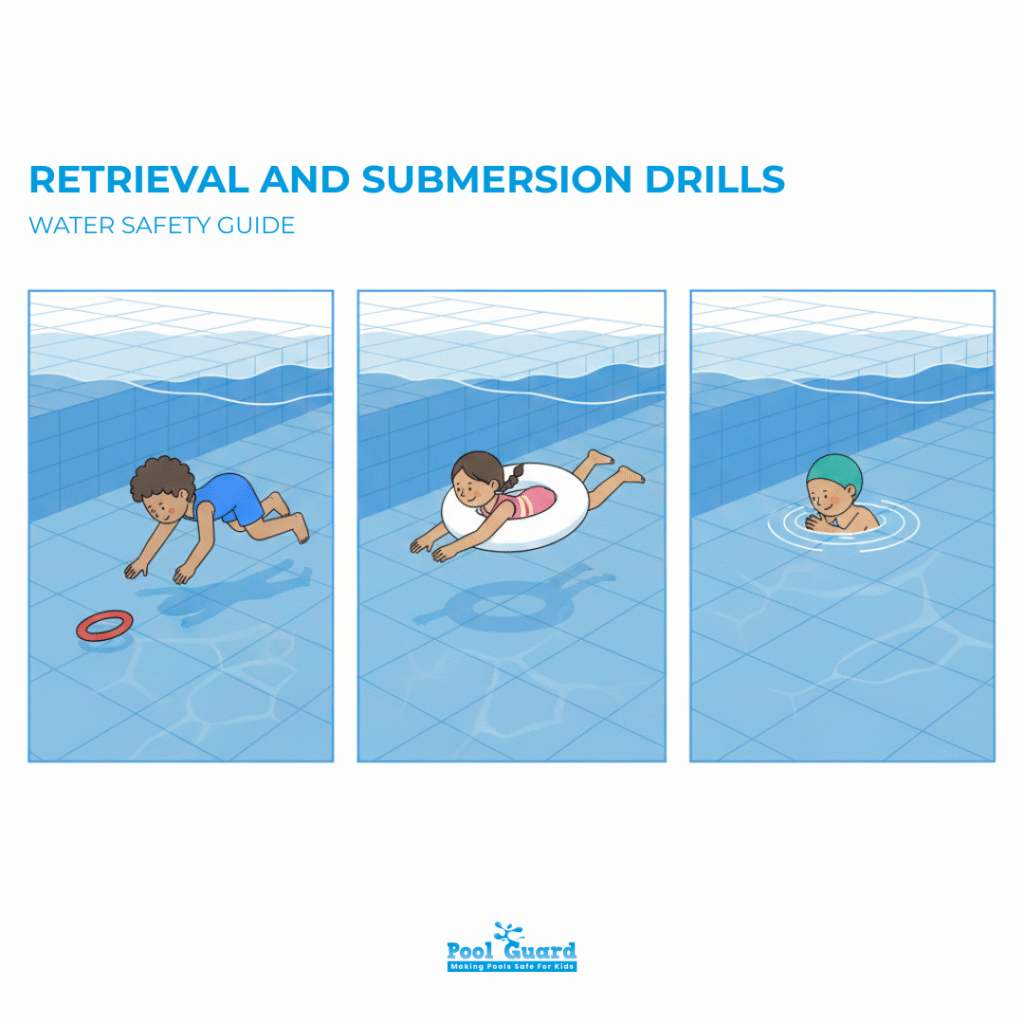
These games sharpen spatial awareness and hazard response—skills that matter when something unexpected happens in the water. Kids learn to react faster, change direction on command, and track movement instead of freezing. Common formats include quick-start racing, direction-change drills, and partner shadowing.
For families who swim in lakes, rivers, or beaches, these games reinforce environmental awareness without creating panic.
These games teach kids to read open-water conditions – currents, drop-offs, murky zones, and hidden obstacles—without triggering fear. The point is to make them notice the environment before they enter it, not after they’re already committed. A simple version is “spot the shoreline hazards,” where kids identify risks from the safety of the shallows.
These games train kids to judge distance, manage their pace, and recognize when it’s time to turn back instead of pushing past their limits. The goal is to build realistic self-assessment, because most open-water incidents start with kids miscalculating how far they can go. One common setup is “Halfway Home,” where they swim to a marker and return while staying calm and controlled.
These games force kids to move, communicate, and react as a team, because open-water swimming should never be treated as a solo activity. The real skill here is learning to stay aware of another person while managing their own movement. Typical versions involve synchronized patterns, partner checks, and quick verbal cues.
These drills teach kids to handle the messy reality of natural shorelines – waves, uneven footing, slippery rocks, and poor visibility. The goal is to build muscle memory for entering and exiting water without panic or missteps. Common setups include wave-timing practice, backward exits, and visibility-focused approach drills.
When you’re planning activities for younger swimmers, you need options that are fun without turning the pool into chaos. This is where pool party games for kids actually pull their weight—structured enough to prevent mayhem, but flexible enough to keep their attention. If you want an extra layer of purpose, mix in water safety games for kids so they’re not just splashing around but also internalizing habits that keep them out of trouble in the long run. These aren’t filler activities; they’re a chance to build confidence, awareness, and respect for the water before the high-energy games begin.
This splash challenge teaches controlled entry and the difference between safe trajectory and reckless jumping. It keeps kids aware of where their body will land instead of jumping blindly.
Safety Tip: Only allow feet-first entries and enforce jumps well away from edges.

A timing-and-awareness chase game that forces kids to judge distance, anticipate movement, and stay calm while reacting. It builds spatial judgment in a way lectures never will.
Safety Tip: Keep it in shallow water for younger swimmers.
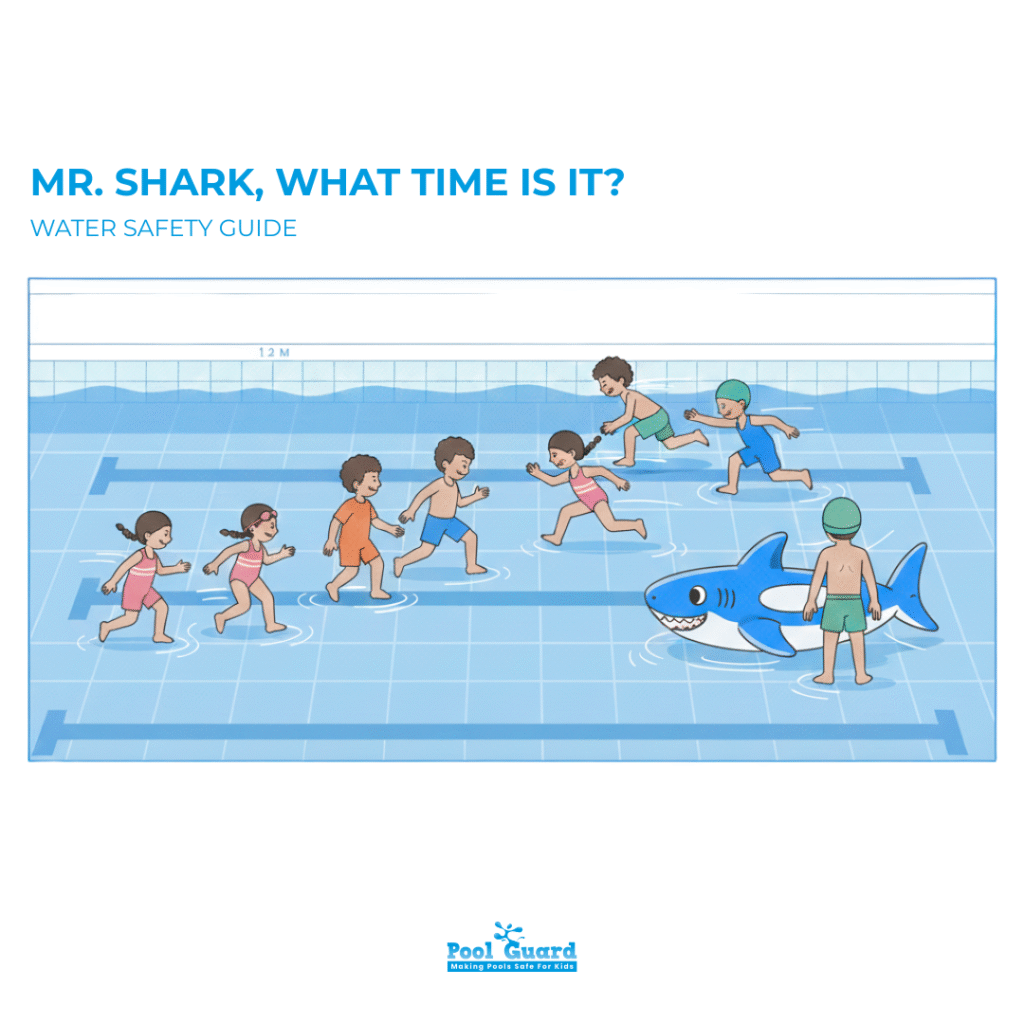
This game sharpens decision-making, evasive movement, and spatial awareness under pressure. The “shark” dynamic also builds group coordination, because kids must watch each other and react in real time.
Safety Tip: Set a “no diving, no pushing” rule before play starts.
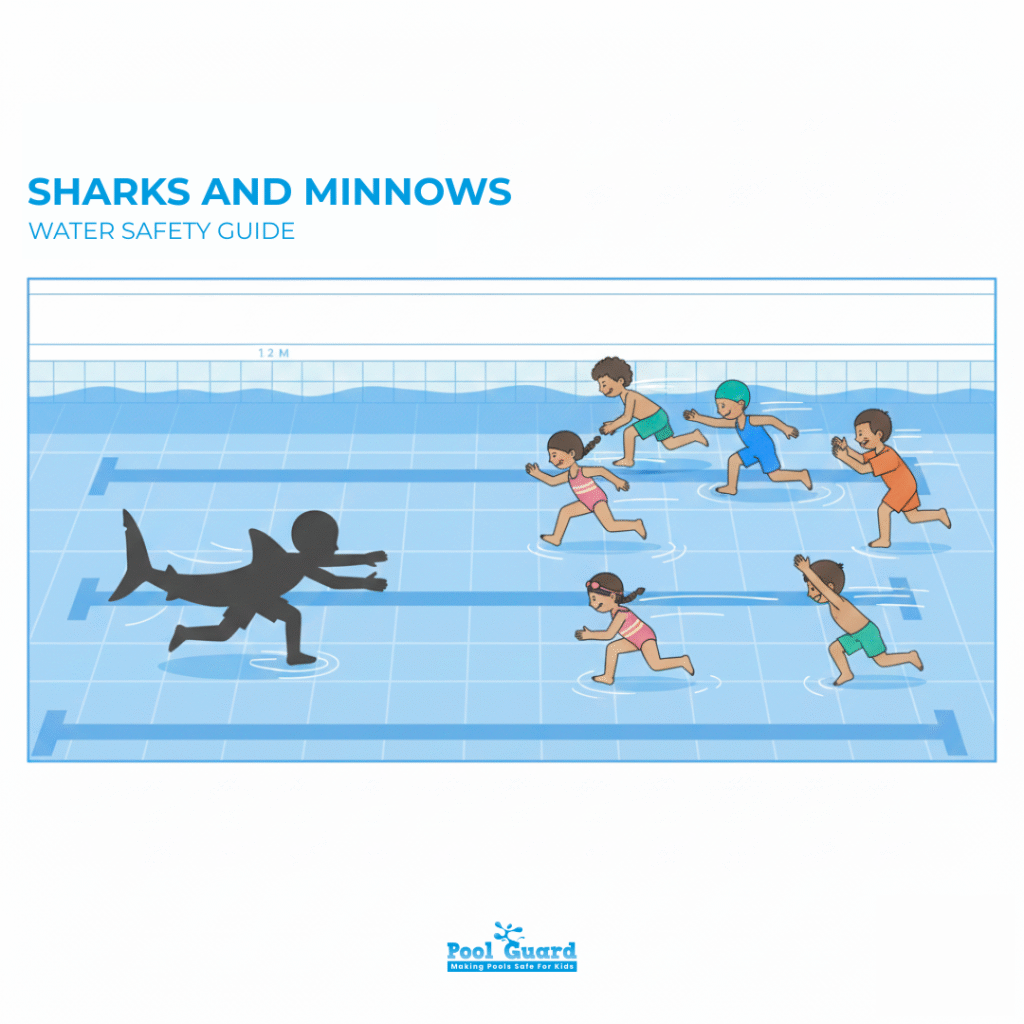
Kids learn breath control, underwater comfort, and calm retrieval instead of frantic dipping. It turns underwater time into something controlled instead of chaotic.
Safety Tip: Only use weighted items designed for pools and keep the game visible to adults.
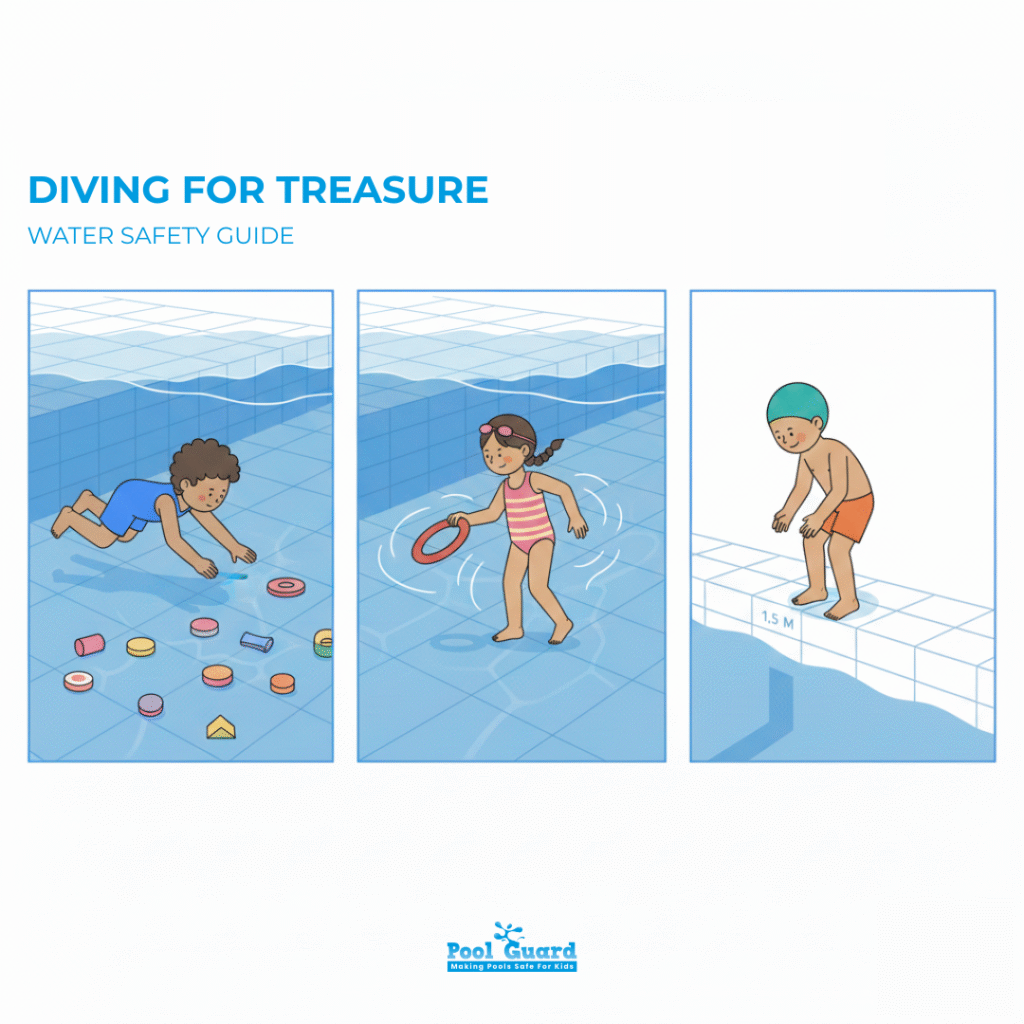
This game forces kids to track movement in low-visibility water and recognize objects without panic. It’s a simple way to strengthen underwater orientation.
Safety Tip: Limit the game to two players at a time to avoid collisions.
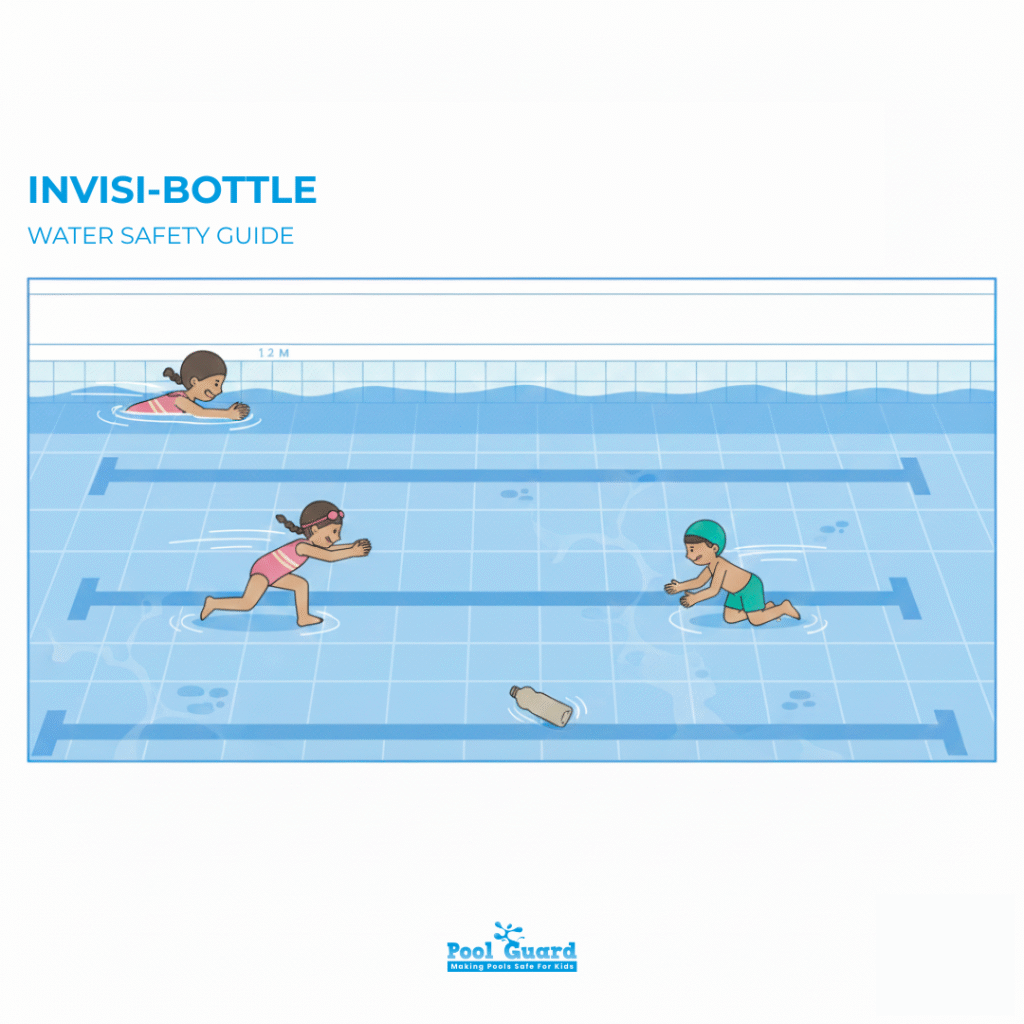
Kids practice treading, quick turns, and coordinated ball-handling—all of which build balance and endurance. The center-player pressure also trains situational awareness.
Safety Tip: Make sure players rotate often to prevent fatigue from building unnoticed.
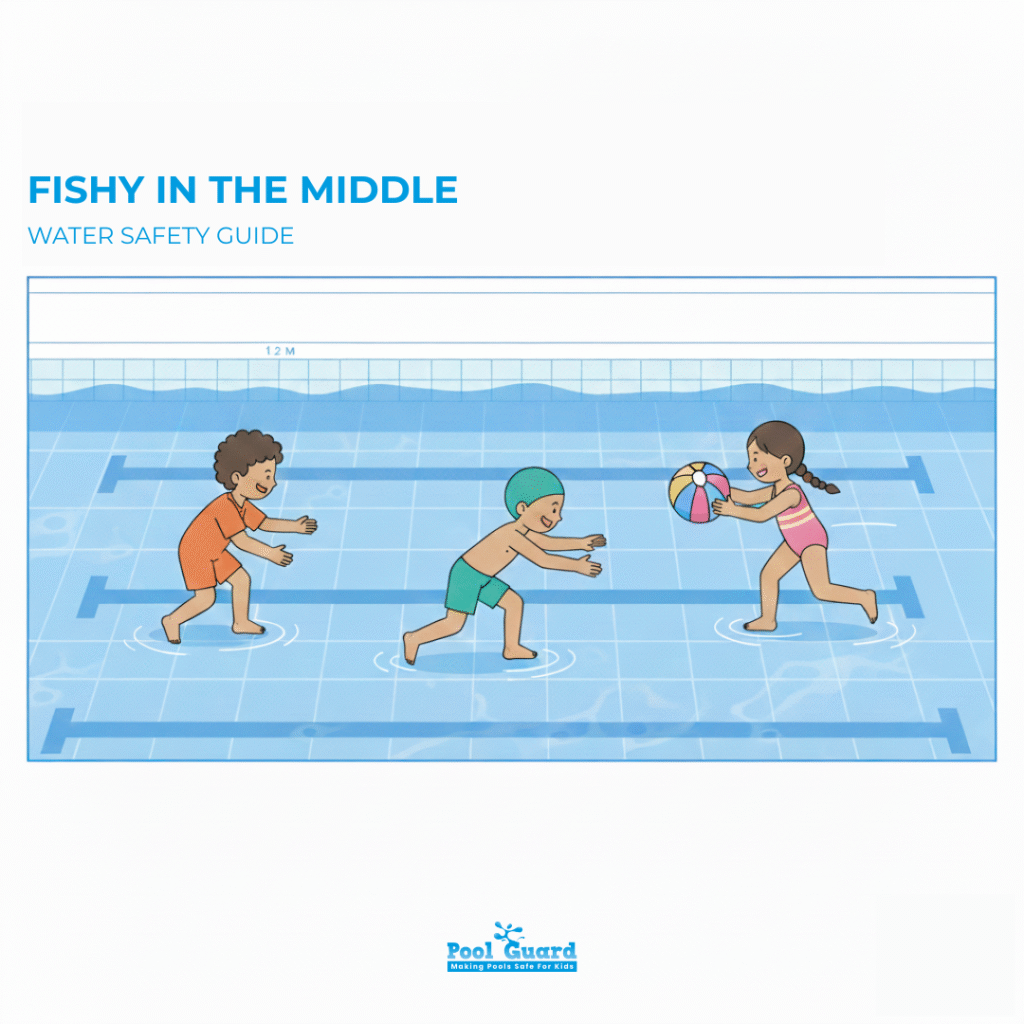
If you want activities that actually challenge grown-ups instead of boring them, you need swimming pool games for adults that demand coordination, awareness, and real engagement—not the lazy stuff people usually default to. The best fun pool games for adults push competitiveness just enough to keep everyone sharp without crossing into unsafe territory. Think strategy, precision, and physical control. When adults play in the water, the stakes are higher, so the games need structure and intention, not random splashing and half-engaged participants.
This game tests balance, timing, and controlled force—great for agility but unforgiving if someone loses awareness. Adults have to manage their own stability while engaging an opponent, which exposes weak control fast.
Safety Tip: Only play in deep water and enforce gentle contact—anything else becomes a liability.
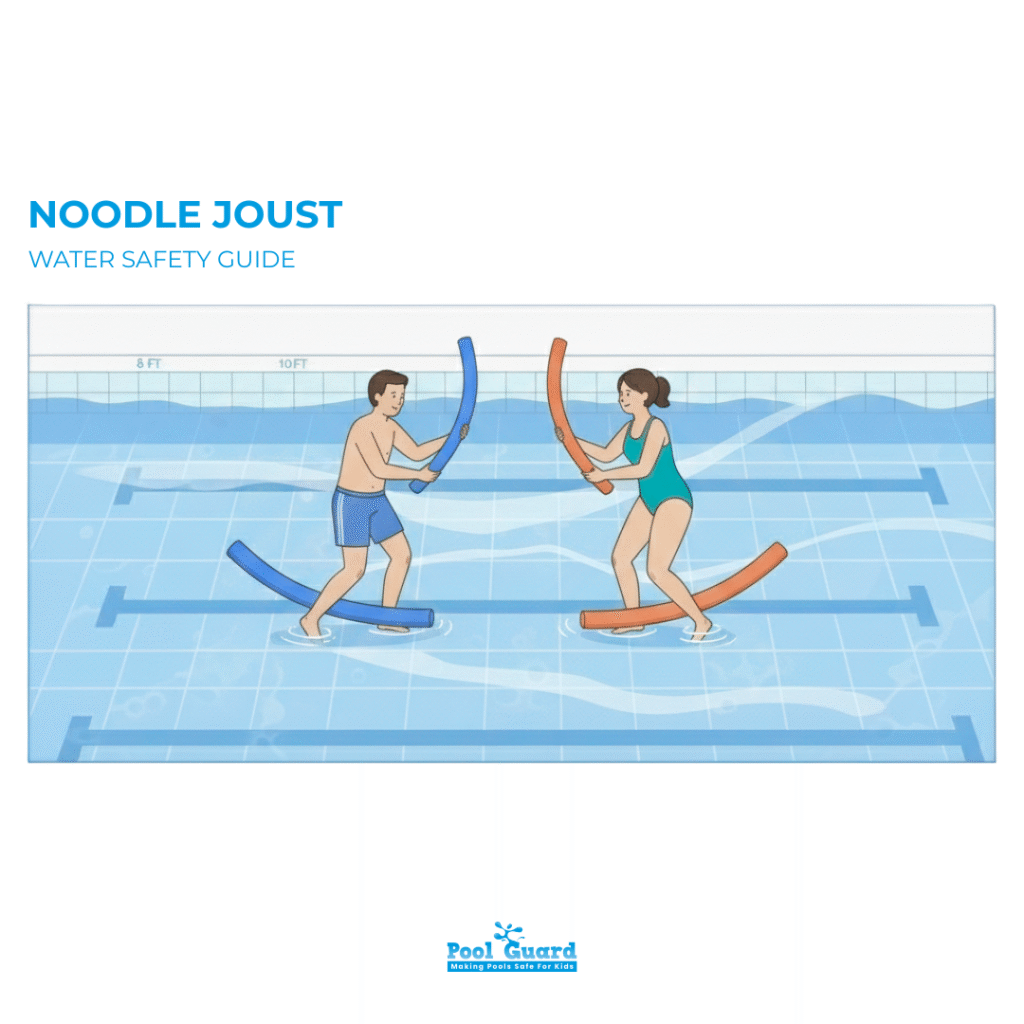
This is a raw strength-and-stability challenge that only works with confident, experienced swimmers; amateurs turn it into a hazard instantly. The top player has to manage balance while the base swimmer deals with unpredictable force.
Safety Tip: Skip this entirely if kids are around and limit it to strong adults only.
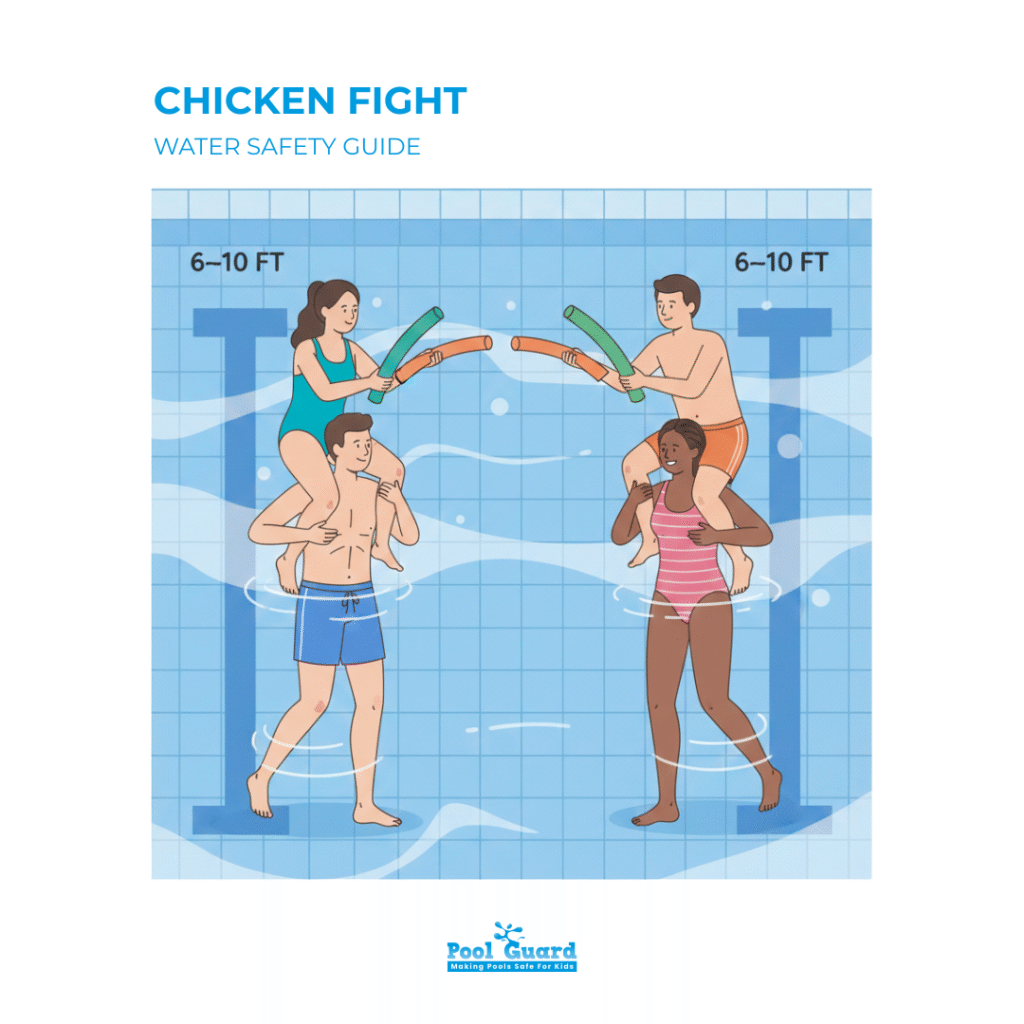
Intense, fast-paced, and physically demanding—basically sprinting in water while tracking a ball and eight people at once. It builds stamina and teamwork but punishes anyone who overestimates their conditioning.
Safety Tip: Use soft balls and enforce strict “no dunking, no rough play” rules.
A progressive tagging format where captured players join hands and form a chain, making movement harder and coordination essential. It scales well for groups but becomes chaotic if the chain gets too long.
Safety Tip: Cap hand-holding chains at four people to keep it controlled.
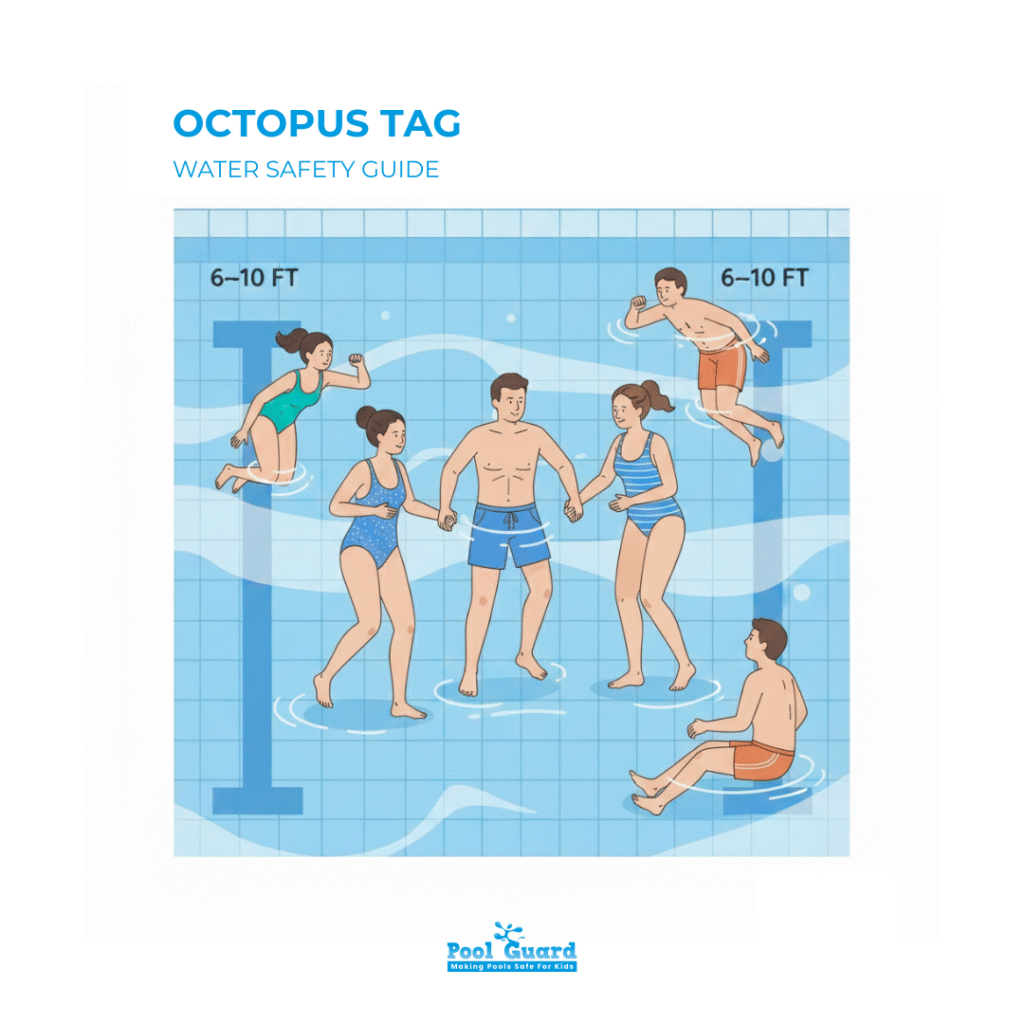
Players walk or swim in a circle to build a current, then fight it—teaching force awareness, balance, and how currents actually behave. It’s simple but brutally honest about who can maintain control.
Safety Tip: Keep young kids outside the whirlpool ring.
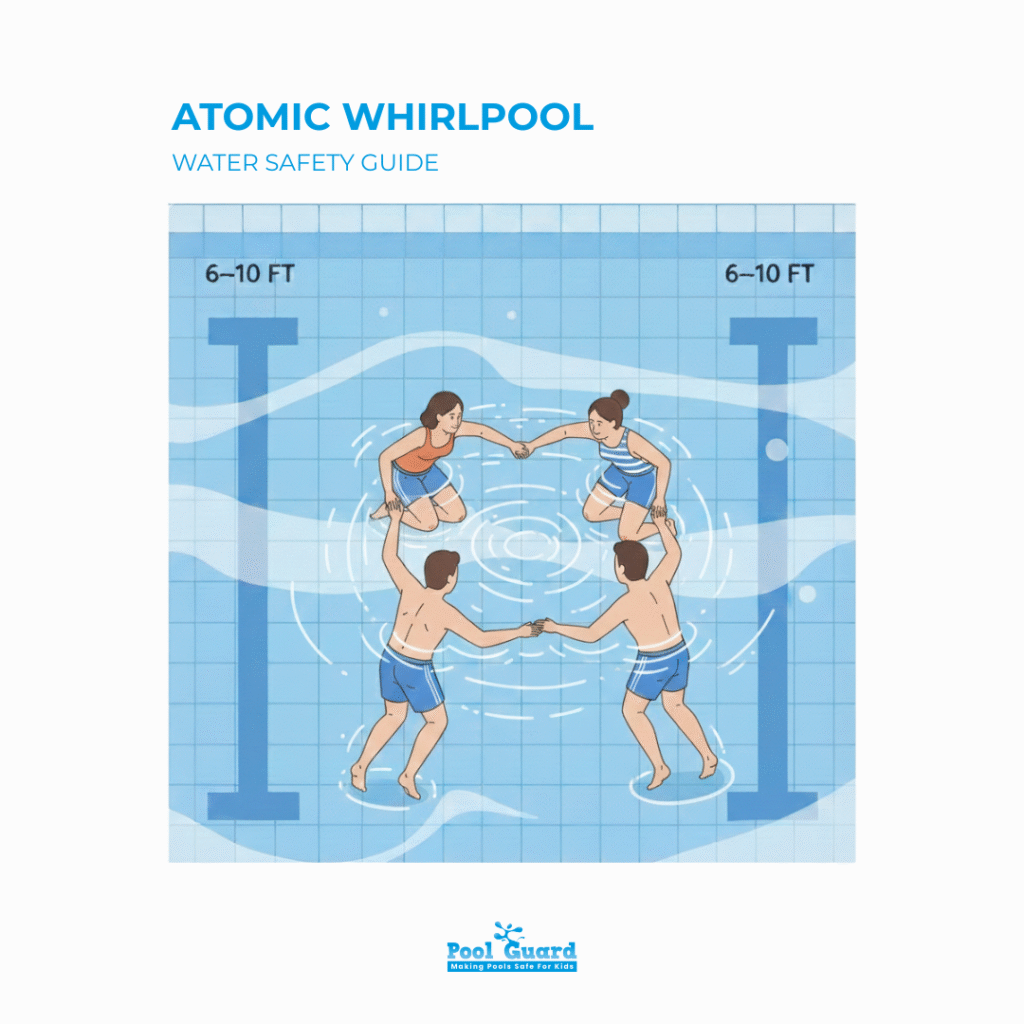
This version forces adults to manage vertical movement, depth shifts, and quick escapes without losing orientation. It exposes weak breath control instantly.
Safety Tip: Make sure participants surface regularly—no extended underwater chases.
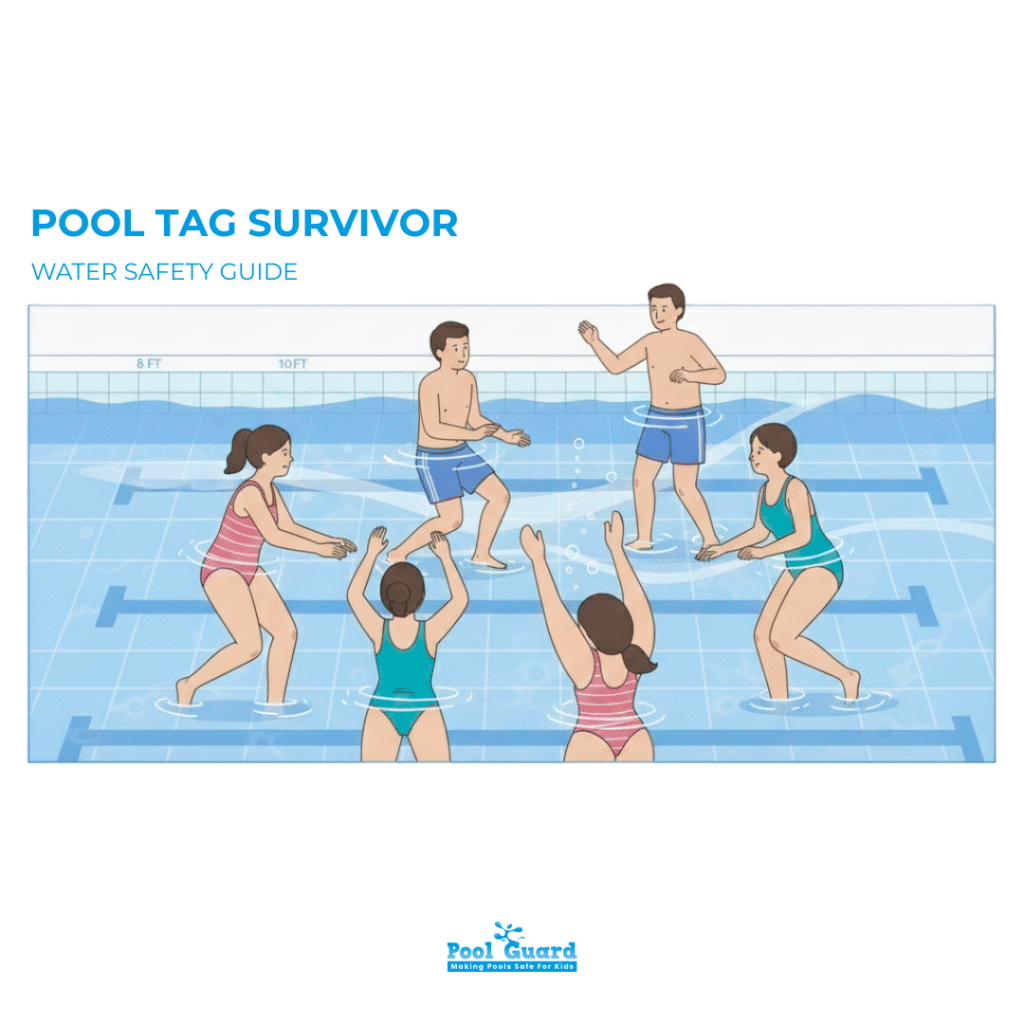
A freeze-tag variant that demands treading strength and underwater coordination, especially when “frozen” players need rescuing. Fatigue creeps in faster than people expect.
Safety Tip: Set a 3-minute rotation for “it” to prevent exhaustion from becoming the real risk.
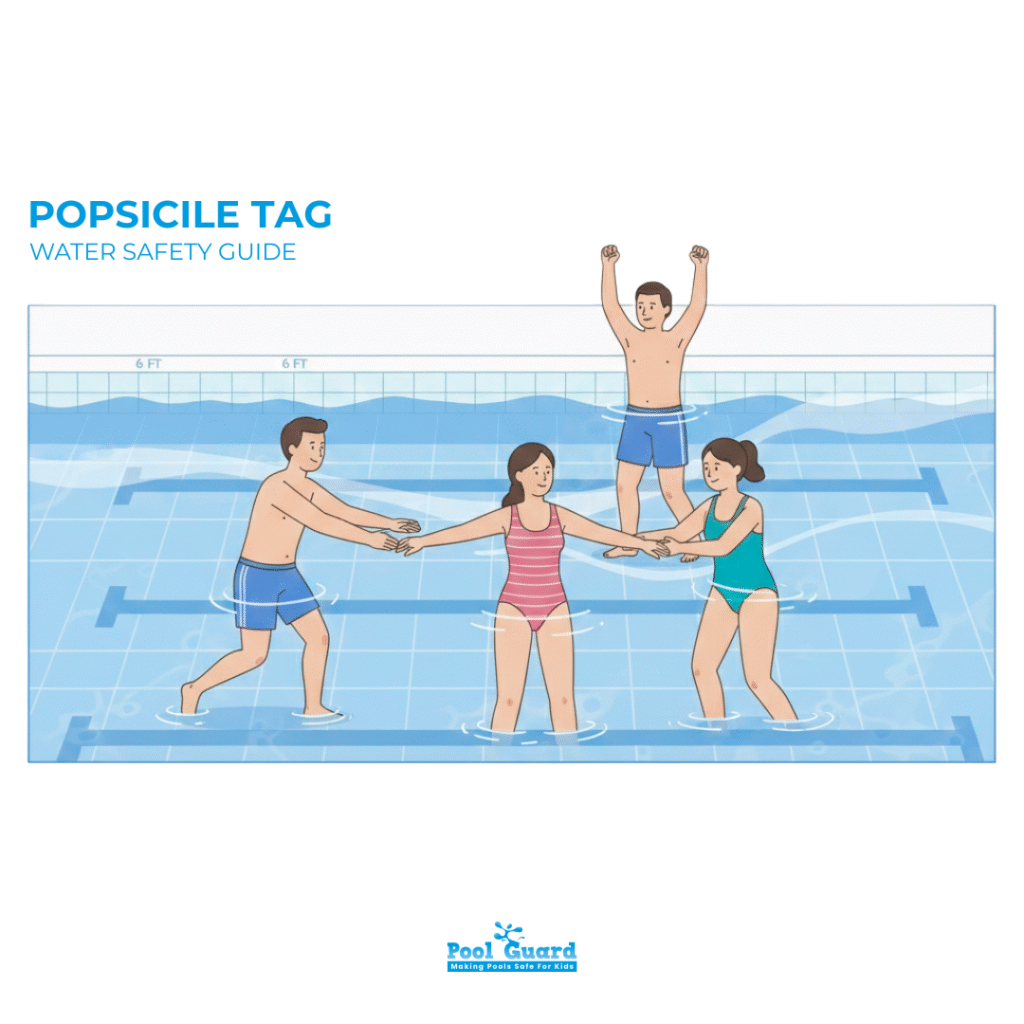
Use simple, binary checks so you stop guessing about progress.
Keep corrections short and specific so kids don’t get overwhelmed.
A checklist keeps you honest about what’s improving and what’s stagnant.
Kids don’t retain skills unless you repeat them.
If you want this system to matter, the games can’t just be entertainment; they have to be the delivery mechanism that hardwires real habits. Water safety games work only when they’re structured, consistently repeated, and backed by the uncompromising rule that no child goes near water without an adult on duty. The barriers, alarms, refreshed protocols, and simple homeowner add-ons all exist to close the gaps that games alone can’t cover. Treat the games as the front end of a larger safety discipline, and the whole program becomes something that actually changes behavior instead of giving families a false sense of security.
Please fill out the form below with your information. Your local dealer will be notified about your inquiry.
Please fill out the form below with your information. Your local dealer will be notified about your inquiry.